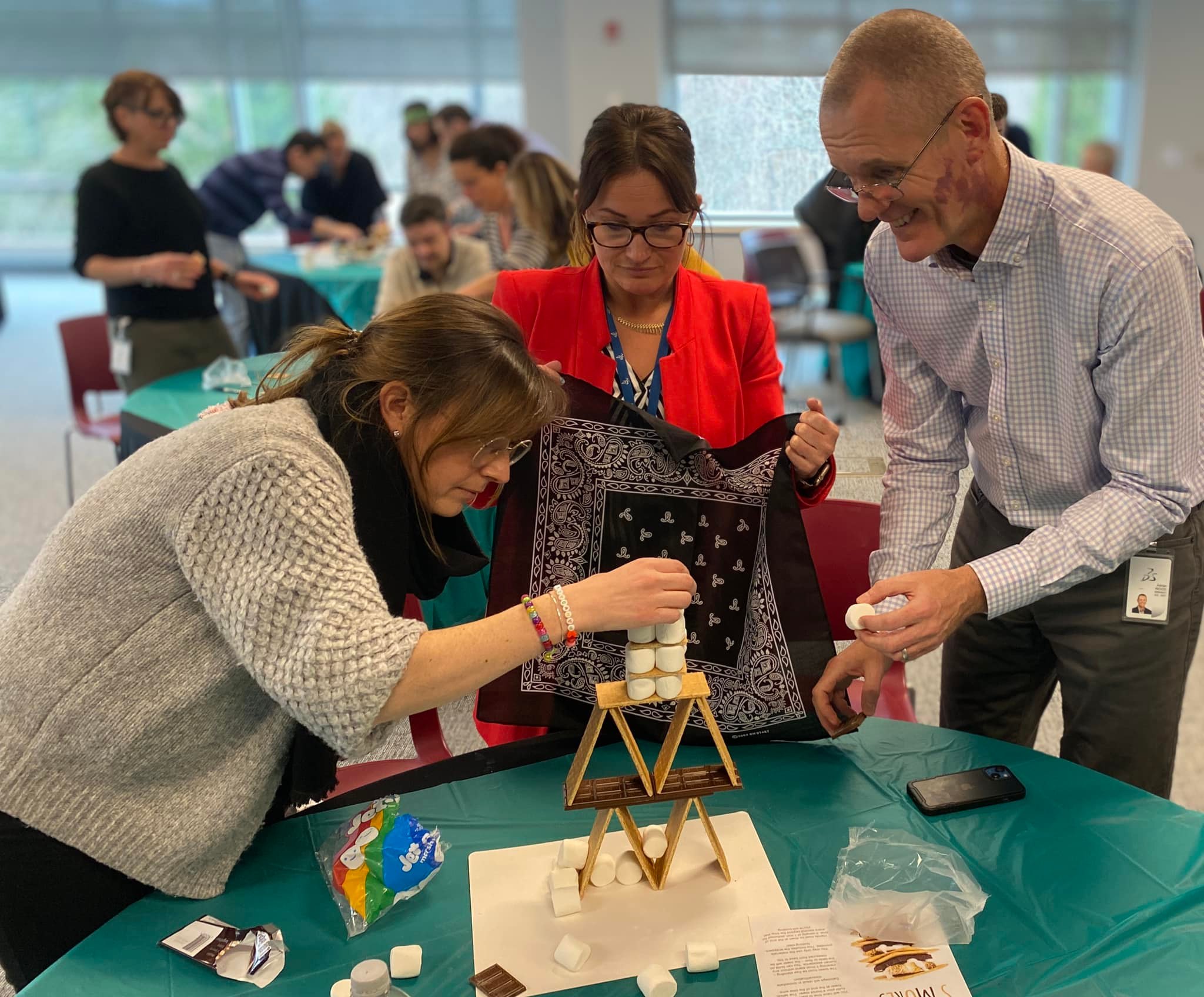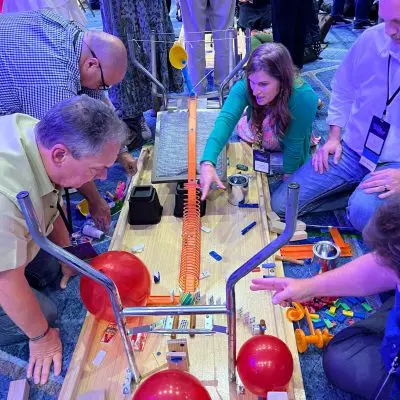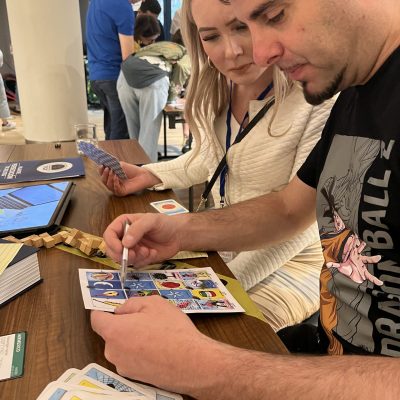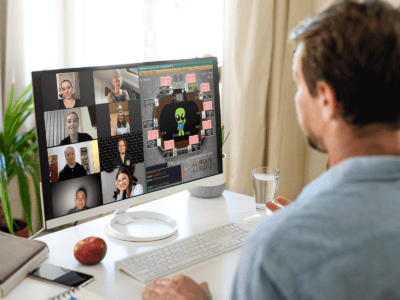The design thinking process is something that has the potential to benefit your business in numerous ways, but many don’t know what it is or how to utilize it. In simple terms, design thinking is a cyclical approach to problem solving innovation centered around people. Design thinking at work can enhance problem solving, create a culture of innovation, bolster teamwork, and more.
However, you can’t implement design thinking into your business and teams if you don’t know what it is, how it works, or how to utilize it. With that understanding though, you can use design thinking to drive innovation and take your business to new heights.
In today’s blog, we’re going to cover everything you need to know about design thinking. From the core principles and benefits to steps, tips, and examples, you’ll have all the knowledge you need to take full advantage of design thinking in your workplace.
Core Principles of Design Thinking
To start, we need to answer the question, “what is design thinking?” Our simple definition for design thinking was, “a cyclical approach to problem solving innovation centered around people,” but there’s a lot more to it than that.
The best way to really understand design thinking is by looking at the stages of design thinking. Each of these stages plays an important role in the whole process, so we’re going to look at each one.
Empathize
Step one is to empathize. By that, we mean empathizing with the end users. You want to intimately understand the target audience/consumer. You want to think closely about how they are using the product/service, their needs, their demands, and more.
That also means understanding their struggles, issues, and problems. Are there flaws in the product? Issues users are commonly facing? Things they wish were different? These are the sort of things that are key in the empathy stage of design thinking.
In practice, this step is relatively simple. You want to talk to consumers and learn as much as you can. That might mean one on one interviews, surveys, observations of them using the product/service, etc. Ultimately, your goal is just to learn as much about the user and their experience with the product/service as possible.
Define
The next step is to clearly and concisely define the problem. You want to use all the information and observations gathered from the empathy stage and use that to help you define the problem. Remember though, you’re thinking about things from the consumer perspective.
For example, say you own a bakery. You wouldn’t want to define the problem as “increase sales by 10%.” You want the problem to be people focused, so your problem might be “provide more fresh products” or “offer a product at a lower price so it’s more affordable.”
Ideate
The ideation step is where things really get creative. This is essentially the brainstorming part of the process. You want to come up with as many ideas as possible to help solve the problem defined in the previous steps.
A key part of this step is freeing yourself from limitations. Don’t worry about whether or not an idea is good. The goal of this step is simply to come up with as many ideas as possible. In fact, the “worst possible idea” activity is commonly used in this step to come up with out of the box ideas.
Prototype
Now that you have ideas, now it’s time to prototype. As the name implies, this stage is where you start taking those ideas and putting them to the test. You’ll basically want to take your ideas from the previous stage and prototype them to see if they’re practical and effective solutions.
Typically, rapid prototyping is an important part of this stage. You want to try out a bunch of ideas, and doing full on prototypes can limit your options. So start out with some low-fidelity prototypes, see what works, and go from there. Eventually you’ll settle on one or a few ideas that seem good.
Test
Last but not least is the testing stage. In this stage, you want to take your prototyped idea(s) and actually try them out. The most important thing here though is the feedback. You want to see how well your ideas work, if users like them, etc.
Typically, users will be brought in to test the product. You want to closely observe them, their actions, their experience with the products, and find out how they feel. Interviews, surveys, and more can also play a role here.
The key is getting that feedback and finding out what worked and didn’t. Since this is a cyclical process, this step will go back to step one. So think about where improvements could be made, problems they’re experiencing with the prototype, etc.
Benefits of Implementing Design Thinking at Work
With the basics covered, let’s focus on the benefits. Design thinking can improve the workplace in numerous ways, and it’s important to understand those benefits before implementing it.
The big and obvious benefits of design thinking are improved problem solving and innovation. Since it’s a methodology all about solving problems and being innovative, it should come as no surprise that it can benefit both those things. And of course, problem solving and innovation are highly important skills in business.
Another benefit is a better work culture. Design thinking promotes and encourages teamwork, which helps bring your team together and create a more positive culture. People also feel more connected to their work and its purpose, which also helps improve work culture. Not to mention that users feel more cared about as well.
Outside of that, it can increase productivity and efficiency. With a specific methodology to use to solve problems, teams can address those problems and come up with solutions much more quickly. That poses benefits for both the business and its customers.
Steps To Implement Design Thinking at Work
Though design thinking may be a fairly simple concept, implementing it at work can be challenging. However, there are steps and things you can do to make it easier.
The first thing you can do is put an emphasis on each of the design thinking process steps. For example, the first stage of design thinking is to empathize. Go out of your way to make empathy, particularly for users, a big part of your company. Read feedback, find out what people are thinking, and make that a focus. That goes for every step of the process
Another way to help the design thinking steps along is by focusing on employee connection. Teamwork and collaboration are key in the design thinking process, and working to improve employee connection can help make the switch to design thinking smoother.
And as with most things in business, communication is key. You need to communicate to your workers and teams what’s going on. Explain the design thinking process, get their feedback on its implementation, and talk to them about their struggles and success with it.
Examples of Design Thinking
We’re nearing the end, but let’s look at a couple of design thinking examples. These examples can help you understand what design thinking looks like in function, as well as show how big the successes associated with it can be as well.
Netflix is a great example of the design thinking process. They got started by addressing the pain point at the time, which was driving to pick up DVD rentals. By shipping DVDs instead, they solved the problem.
Netflix innovated again by realizing DVDs were becoming outdated for customers and implementing their on-demand streaming model. And they continued design thinking by addressing customers’ want for original content by creating their own original content.
Another example is Oral-B. They wanted to improve their electric toothbrushes, and they started by listening to customers and getting feedback. They quickly realized that customers didn’t want more features, but rather improvements elsewhere.
In the end, Oral-B identified customers’ problems (difficulty charging and replacing heads) and solved them by making charging easier and allowing for phone reminders about when the head needs to be replaced.
Tips for Encouraging a Design Thinking Mindset in the Workplace
Now, let’s go over a few tips for encouraging a design thinking mindset in the workplace. To start, there are tons of design thinking exercises and design thinking activities you can utilize to encourage the right mindset. Many of these are free and can be found online, so don’t be afraid to try them out.
Recognition and rewards can also help. Simply taking the time to recognize employee successes in regards to design thinking can go a long way in encouraging that mindset.
Lastly, team building events and activities can also be a good idea. Events like Bridging the Divide, Domino Effect, In It To Win It, and The Chocolate Challenge can all help with design thinking. These events encourage teamwork and collaboration, as well improve on essential skills like leadership, communication, and more.
Design Thinking with TeamBonding
Design thinking is a process of looking at a user’s experience, empathizing with it, and finding ways to identify and solve the problems they face. With design thinking, you can improve innovation, creativity, efficiency, and much more. If you want to be a successful and innovative business, it’s something you can’t ignore.
If you’re ready to implement design thinking at work, consider TeamBonding. We have over 25 years of experience putting together corporate events, and we have a wide selection of events that can help implement design thinking. So get in touch today and become the innovative business you want to be.
















